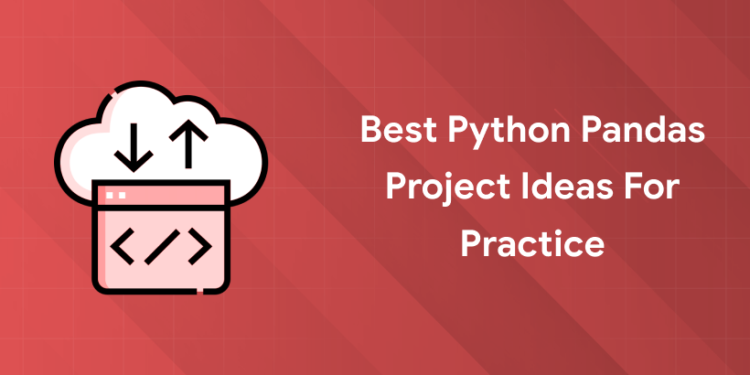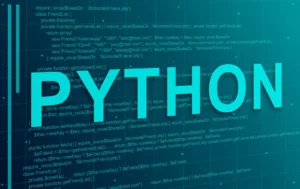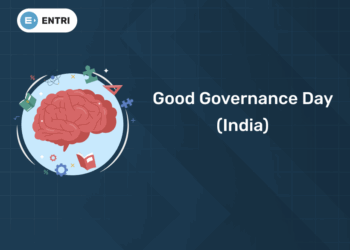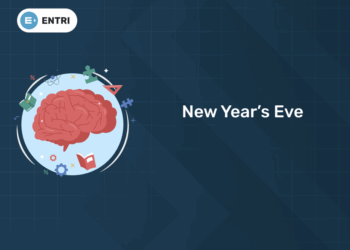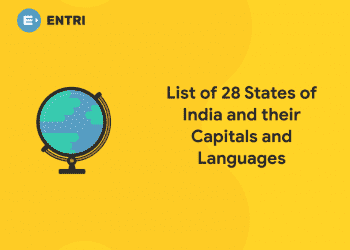Table of Contents
Python plays a crucial role in data analysis, machine learning, and scientific computing. Python programming language is one of the highly demanding machine learning programming languages used by most of developers world wide. The importance of python has led it to ‘slither’ into projects done by graduates and professionals. This blog provides python pandas project ideas for getting a hands-on experience on the language.
Check out this video by Entri in Malayalam!
In this article, we’ll outline some best Python project ideas to swift your learning path across your skill levels and domains.
Get hands-on with our Python Programming course – sign up for a free demo!
Why Python Pandas Projects?
To simplify the task of data science and machine learning pandas are used in Python projects. Pandas are an open source library for Python. Pandas is a combination of the words panel and data. It is also referred as the contraction of the term Python Data Analysis. Panel data records the behavior of multiple subjects whereas Python data analysis is a form of analysis that is streamlined by Python based libraries. The Pandas library was created as a building block for doing real-world analysis in Python. Some of the advantages of using Pandas in Python are given below.
- Pandas data structure is efficient.
- Pandas tools are incredibly powerful.
- Data merging is simple in various situations.
- Pandas can be used in several domains
- Data merging becomes easier by using Pandas.
- Datas are flexible with Pandas.
- Employees can finish their task with less code.
Best Python Pandas Project Ideas In 2025
1: Which of the following algorithms is most suitable for classification tasks?
Sentiment Analysis
It is the most trending Python pandas project idea worked upon in various fields. It uses natural language processing, text analysis and biometrics to systematically identify, extract, and study affective states and personal information. We use this technique in various field such as ecommerce and review poll systems. The execution of this project includes four stages that includes data preprocessing/filtering, feature extraction, pairwise review scoring, and classification.
Libraries used to create this project includes NLTK and Scikit Learn.
- The Python NLTK module aims at providing a complete solution to a natural language processing problem. It helps with everything from splitting sentences from paragraphs, splitting up words, recognizing the part of speech of those words, highlighting principal subjects, and then allowing the machine to understand what the text is all about.
- Scikit Learn is a machine learning library that features various classifications, regression and clustering algorithms including support vector machine, random forest, gradient boosting Kmeans and DB scan.
Also read: The Roadmap to Becoming a Python Pro in 2025
Object Detection System
Object detection is a popular computer vision method and a popular Python project idea that allows us to identify and locate objects in an image or a video. We can use this technique for various tasks to count items in a scene and determine and track their precise locations while accurately labeling. Libraries used for this project include Tensorflow, OpenCV and Keras.
- TensorFlow is a popular Python library used for deep learning. It can be used across various tasks but is mostly focused on training and inference of deep learning and neural networks.
- OpenCV( Open source computer vision) library is an open source Python library used for machine learning and computer vision. It provides a common infrastructure for computer vision applications and speeds of machine perceptions in commercial products.
- Keras is an open source library that provides a Python interface for artificial neural networks. It is used to support multiple machine learning and deep learning libraries but since version 2.4 it act as an interface only for the Tensorflow library.
Twitter Bot
A Twitter Bot can control and manage a Twitter account through a Twitter API. The bot can autonomously perform all kinds of tasks such as tweeting, retweeting, liking, following and unfollowing among others. Libraries used to create this project include Tweepy and Tkinter.
- Tweepy is a Python library for accessing Twitter API. This library enables Python to communicate with the Twitter platform and use its API.
- Tkinter is the most commonly used method for developing a graphical user interface. It is a standard interface to the TK GUI toolkit shipped with Python. It is the fastest and easiest way to create GUI applications.
Speech Emotion Recognition
In this project you will create a model that can identify emotions in audio recordings by using the Keras and TensorFlow frameworks and use an MLP from the Sklearn library. Python Pandas libraries are used to load the dataset and perform exploratory data analysis on it.
Medical Data Extraction
Medical data extraction is where you will auto extract medical information from documents such as patient detail forms or prescriptions from scanned pdf documents. In terms of technical architecture this project has three main components. They are:
- Improving the quality of images using OpenCV and image processing principles.
- Extract a text from the image using the pi Tesseract module.
- Using regular expressions to retrieve the meaningful fields from the extracted text.
Web Crawler
Web search engines and some other websites use web crawling or similar methods to update their web content of other websites web content. The library used for this project is scrapy. Scrapy is a web crawling Python framework. It can also be used for data extraction using API or general purpose web crawler. Web scraping with Beautiful Soup is a Python package by passing HTML and XML documents. It creates a parse tree for parsed pages that can extract data from a html which is useful for web scraping.
Also read: Python Web Developer Roadmap: A Step-by-Step Guide
Currency Converter
It is a Python project idea that involves developing a simple software or an application that converts one currency into another to check its corresponding value. Libraries used to create this project include Request, Forex and Tkinter.
- Request – The Request module allows you to send http requests using Python. The http request returns a response object with all the response data including content and coding status etc.
- Forex – It is a Free Foreign exchange rate and currency conversion library and provides several features like a list of all currency rates, currency price, converting the amount to bitcoin etc.
- Tkinter – It is the most commonly used method for developing a graphical user interface.
Dice Rolling Simulator
This project idea is a great way to enhance your Python programming prowess. This project requires basic knowledge of Python and Tkinter. This endeavor will teach you the ropes of collecting and verifying user inputs incorporating codes from modules and packages, composing functions, leveraging for loops and conditionals and presenting output in an organized manner through string and print() functions.
Libraries used to create this project include:
- Random: It is a built in module used for generating and working with random values. It provides various methods that can be used for creating and manipulating random variables.
- Tkinter library: It is the most commonly used method for developing a graphical user interface. A standard interface to the TK GUI toolkit shipped with python
Also read: Python Django Model Fields (The Complete Guide)
Customer Segmentation
Customer segmentation refers to the process of dividing customers into groups based on common characteristics or features. So companies can tend to each group effectively and appropriately. Libraries used to create this project include Numpy, Pandas, Scikit learn and Mat Plot Lib.
- Numpy is a Python library that adds support for multi dimensional arrays and matrices along with a massive collection of high level mathematical functions to operate on these arrays.
- Pandas is a Python library for data manipulation and analysis. It offers data structures and operations for manipulating numerical tables and time series.
- Scikit Learn is a machine learning library that features various classifications regression and clustering algorithms including SPVM, Random forest etc. It is also designed to interoperate with Python libraries like Numpy and Pandas.
- Mat Plot Lib is a Python library used for plotting charts and graphs from the derived data.
Random Wikipedia Article
This project idea is little bit complicated yet a straightforward project. The program searches Wikipedia and fetches a random article. Then it asks the user if he wants to read that article or not. If the answer is yes, the material is shown; otherwise, another random report is presented. This is an apt project for those developers at the intermediary level looking to further their careers by developing creative and complex Python programs.
Rock Paper Scissor Game
Embarking on game programming is fantastic avenue for mastering programming skills. It involves utilizing various tools found in real world scenarios and added perk is that you get to assess your outcome by playing the game. An excellent starting point for your Python game programming expedition is the classic game of rock paper scissors. The library used for this project is Random, Tkinter, and pygame. Pygame is cross platform set of Python modules designed for coding games. It provides computer graphics and sound libraries that are intended to be used with Python.
Credit Card Fraud Detection
Credit card firms must detect fraudulent credit card transactions to prevent customers from being charged for products they did not buy. Such challenges can be addressed by data science and its significance, coupled with Machine Learning, cannot be emphasized. Credit card fraud detection is a machine learning project that helps to solve credit card fraud transactions. Libraries used for this project include numpy, scikit learn, and few other python libraries.
Are you aspiring for a booming career in IT? If YES, then dive in |
||
Full Stack Developer Course |
Python Programming Course |
Data Science and Machine Learning Course |
🚀 Start Coding Today! Enroll Now with Easy EMI Options. 💳✨
Equip yourself with in-demand skills to land top-tier roles in the data-driven world.
Start Learning Now with EMI OptionsChallenges You Might Face in Pandas Project
Working on a Pandas project can often lead you to some challenges that may be quite complex. However, if you are able to capitalise it, you are gold! These challenges can be turn into opportunities for learning and rectification. Let’s look at some of the challenges that you might face:
Missing data
There may be chances of your data having some missing data. Rows and columns may not have any data on them, leading to a bit of a mix up when you run thee code. How do we deal with this? Here you go:
- If it’s not too many missing data, you can simply delete the rows or columns.
- You can fill the missing rows or columns with a partially correct value, like the average or median of that column or row.
- In some cases, you can be a bit analytical, and analyse as to why there are missing data, especially if it’s random.
Large Datasets
Working with a large dataset is all fun, unless your code is fast. A code which is correct but takes a lot of time can make working on a big dataset a nightmare. To fix this, you can:
- Use efficient data types, like integers or floats, as they will save memory and store numbers.
- Avoid using loops for row-by-row operations.
- Try loading the dataset as chunks instead of one single large data.
- Try to use the built-in functions of pandas that are specially optimised for speed.
- You can even try other specialised libraries like Dask or Vaex that work with large datasets more efficiently than Pandas.
Complex data structures
Pandas lets you work with complex and advanced data structures that can be a bit confusing or tricky. Examples include mylti-level indexes or hierarchial data. To fix this, you can:
- Simplify your data by flattening it or reducing the complexity when it has multi-level columns and rows.
- If you want to be a bit adventurous and and want to try out multi-level indexing (which lets you have rows or columns grouped by multiple categories), take some time to go through tutorials on the same.
Also read: How to Learn Django Framework (Experts Guide)
Conclusion: Pandas Projects
Working with Pandas is an excellent way to gain hands-on experience in data manipulation and analysis. By confronting real-world projects, you get to understand the theory in depth and also develop necessary skills to work on actual datasets. Mastering Pandas will definitely give you the upper hand in 2025. Now go ahead and put to test all the knowledge that you’ve gathered through our Python project ideas guide to building your very own Python project!
If you feel like you need to brush up or learn more on python programming, check Entri’s python programming course. With industry experts as mentors, top quality materials, and placement assistance, you are bound to be the best in Python. So, enrol now, and start your journey in coding!
🚀 Start Coding Today! Enroll Now with Easy EMI Options. 💳✨
Equip yourself with in-demand skills to land top-tier roles in the data-driven world.
Start Learning Now with EMI OptionsFrequently Asked Questions
Do I need to be an expert in Python to start using Pandas?
No, you don’t need to be an expert! If you’re familiar with basic Python concepts, like loops, functions, and lists, you can start learning Pandas. Pandas is beginner-friendly, and there are plenty of tutorials and resources to help you get started.
Can I use Pandas for machine learning projects?
Yes! Pandas is often used for data cleaning, preprocessing, and exploratory data analysis (EDA) in machine learning projects. While you would use libraries like Scikit-learn or TensorFlow for building machine learning models, Pandas plays a key role in preparing your data for those models.
What's the best way to learn Pandas?
The best way to learn Pandas is by working on projects. You can start with small, simple datasets, like CSV files, and practice tasks like cleaning data or performing basic analysis. There are also many free resources like tutorials, documentation, and videos that explain Pandas concepts in detail.
How do I deal with really large datasets in Pandas?
When working with large datasets, you can:
-
Load the data in chunks rather than all at once.
-
Use more memory-efficient data types.
-
Explore Dask or Vaex, which are libraries that offer better performance than Pandas when dealing with large datasets.
-
If you don’t need the entire dataset, try filtering and selecting only the columns or rows you need to work with.
What are some common mistakes beginners make in Pandas?
Here are some common mistakes:
-
Not handling missing data properly: Either ignoring missing values or not choosing the best way to fill them.
-
Confusing
locandilocfor indexing: These two methods are used for different types of indexing (labels vs. position). -
Inefficient looping: Writing for-loops to iterate over DataFrame rows can be slow. Instead, try to use Pandas vectorized operations, which are faster.
-
Not using Pandas’ built-in functions: Pandas comes with many built-in functions that are optimized for performance—don’t reinvent the wheel!
Can I use Pandas for data visualization?
While Pandas itself doesn’t specialize in visualization, it integrates very well with other libraries like Matplotlib and Seaborn. You can create graphs, plots, and visual representations of your data directly from a Pandas DataFrame. For basic plots, you can even use Pandas’ built-in plotting functions.
How can I improve the performance of my Pandas code?
Here are some tips to improve your Pandas code:
-
Use vectorized operations instead of loops.
-
Avoid using
apply()when possible—it’s slower than built-in functions. -
Use categorical data types for columns with repeated values.
-
Optimize memory usage by converting columns to the most appropriate data types (e.g., using
int8instead ofint64when possible).


